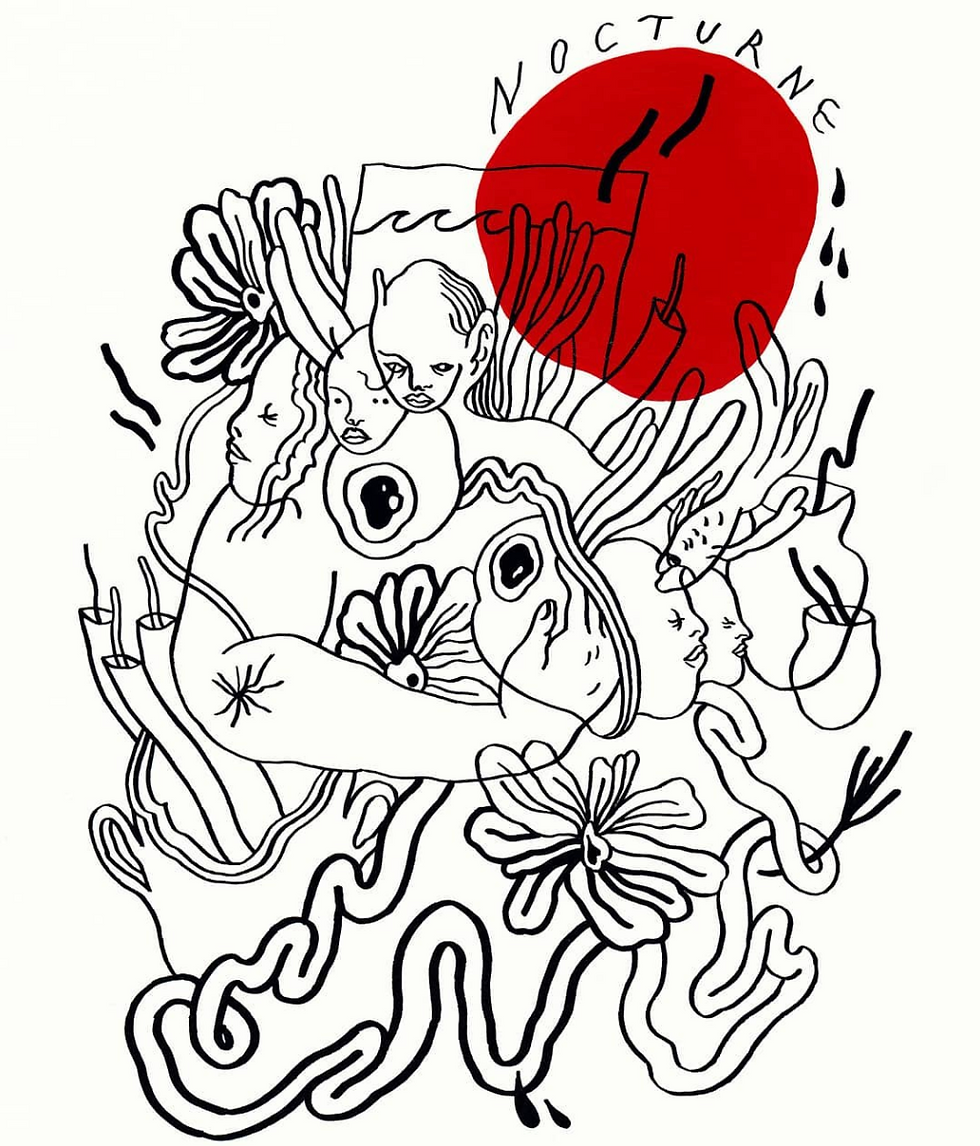ENO’s 2019 Production of Akhenaten and Abstract Fantasy
- Ian Macartney

- Jul 2, 2020
- 2 min read
Updated: Jul 19, 2020
Written as part of the Epikinetics series. Read more of Ian's work here.

Art by Julie Berger Lindh (IG: @jellyburger__)
The radical essence of literature is that it is not rooted in the image, but a more complex imaginative system, something inner, conceived after engaging with the symbols of language.
I. The new literature is post-physical. As Alan Warburton has expressed in his video-essay “Goodbye Uncanny Valley” (2017), the image has three futures—one of technical enhancement, one of "post-truth" (video-shopping; universal distrust in the image) and one of "post-cinema," in which mainstream narrative film has been subsumed by pure CGI spectacle; film arose from zeotropic carnival attractions, to an artform, and then regressed into Hollywood cine-slime. Pink explosions, one-liners, famous faces.
II. In the face of this, literature can flex. The radical essence of literature is that it is not rooted in the image, but a more complex imaginative system, something inner, conceived after engaging with the symbols of language. For each word on a page there are infinite realisations of whatever that word connotes—infinite imagery, of a sort. Visual culture is exhausting its prowess in the public consciousness. Which isn’t to say the new literature will replace it, but rather that literature has radical powers that can overcome the limitations of the image.
III. The term "Abstract Fantasy" defines this possibility. Abstract Fantasy is an aesthetic style that aims to highlight how writing can transcend the image by describing the abstract and unseen in tangible terms. Consider Jeff VanderMeer’s indescribable creature at the end of Annihilation—something couched entirely in the cerebral, but with direct consequences for characters.
IV. Though of course one must be careful the style does not become exhausting. The podcast Welcome To Night Vale (2012) uses the style effectively, because it fits into the medium. The novel (2015), however, becomes exhausting to read. On the one hand, the radicality of Abstract Fantasy comes from its start in the subject(ive)—because if our reality is so infected with capitalist realism, we have to start from the interior to create alternatives—but this also means the style could end up being weaponised as escapism of a sort.
V. There is probably some connection to Object-Orientated Ontology. (Non-)skeletal nature of imagery revealing pure network and connection? I dunno.
VI. When I saw Akhenaten (ENO, 2019) back in February, there was one scene that particularly stuck with me. A circle hovered in the upper-right corner of the stage, a background sun. However, in Act II, with the removal of the scaffolding construct on stage, this was revealed to be a huge sphere, a white globe that hung in the middle of the action. It was then lit in such a way as to look purely red; the lines of its sheet-edges evaporated. It played its part as the sun. The colour was so pure and smooth it seemed to have been formed in a computer program. Around this orb the pharaoh wandered, singing his countertenor hymn, a song for this pure object, this buoyant immensity, a basic unit of visuality rendered massive in its lack of detail. This is the Abstract Fantasy our new literature may work towards.
Isle of Skye, April 2019 (14th)









Comments